Heal the Bay’s Guide to Staying Safe at the Beach
May 6, 2016 — With summer just around the corner, our staff experts offer ten tips on how to make your next stay at the beach as safe as possible. From minor annoyances like sunburns to major dangers such as bacterial pollution, we’ve got you covered. If you have any questions or concerns, please feel free to contact us. We also welcome any suggestions for this list!
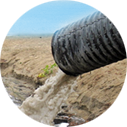 BACTERIAL POLLUTION
BACTERIAL POLLUTION
The good news is that water quality at local beaches continues to improve, with 95% of L.A. County beaches receiving an A or B grade in the summer in our last annual report – but bacteria polluted hot spots remain. We advise you to stay at least 100 yards from beach storm drains and creek/river mouths (about the size of a football field). And don’t forget to check the Beach Report Card for the latest grades! They can help you make a decision about which spots are best for you and your family.
 BIG SURF
BIG SURF
Summer brings south swells to Santa Monica Bay, which can trigger pounding surf and very dangerous rip currents at local beaches. If the surf looks dangerous to you or your family, it probably is, so play it safe and stay close to shore. If someone in your party can’t swim, keep them safely away from the water’s’ edge – sneaker waves can grab them. If you have any concerns about the safety of the water, make sure to talk to a lifeguard first. If you are a surfer, admit your limits and don’t put yourself needlessly in danger. One tip for swimming in surf (even on smaller days) is to dive underneath the waves instead of trying to swim through or jump over them.
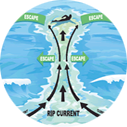 RIP CURRENTS
RIP CURRENTS
If you are caught in a rip current, don’t fight it. Instead, swim parallel to shore for a few yards until you are free from its grip. Then you can safely swim to shore when you reach calmer water. Many people exhaust themselves flailing in place trying to swim directly to shore, necessitating a guard rescue. To identify rips, look for unusual gaps as waves break and create whitewater. The water is usually discolored near the shore and the surface of the sea is unsettled and choppy. The L.A. County lifeguard division has assembled a video that shows how to identify troubled waters.
 JELLYFISH
JELLYFISH
Some species of jellyfish in the Bay can ruin a day at the beach. Jellies float through the ocean carried by currents, so they don’t really seek human contact. When swimmers do bump into them, venom stored in sacs on their wavy legs can cause significant irritation. Wearing a long-sleeve rash guard may offer protection. If you are stung, an application of basic white vinegar can help denature the toxins released by the animals. And don’t let your kids play with dead jellyfish on the shore – they can still sting!
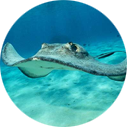 STINGRAYS
STINGRAYS
Stingrays are actually members of the shark family, and are attracted to the warm shallows of the Bay during summer. If you step on or get hit by the barb of a stingray the animal will pump venom into the wound, much like a bee. The sting is highly painful and the only relief comes from soaking your foot in very hot water to disperse the toxins. Doing the stingray shuffle – sliding your feet on the ocean floor as if on skis – is the best way to shoo away potential dangers.
 SHARKS
SHARKS
Yes, there are white sharks in the Bay. No, it’s highly unlikely that you’ll ever see one or be bothered by them. Most of the whites spotted in our waters recently have been smaller juveniles swimming in the South Bay, feeding on bottom fish not mammals. There have only been 13 fatal white shark encounters in all California since the 1920s, so statistically eating a hot dog is more dangerous than taking a swim in the ocean! It’s advisable to avoid swimming in waters used by fishermen, however.
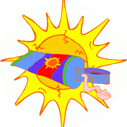 SUNBURN
SUNBURN
Don’t be fooled by hazy days at the beach. Some of the worst sunburns come on overcast days, when beachgoers are lulled into a false sense of security. Harmful UV rays have no problem penetrating hazy cloud cover and wreaking havoc during the summer, when the sun’s rays are closest to earth. It’s also a good idea to put on sunblock at home – applying sunscreen 30 minutes before sun exposure helps it bind to your skin, plus you are less likely to forget with the distractions of the shoreline. And super-high SPF sunscreen isn’t a must – SPF 30 blocks 97% of harmful rays. Don’t forget to reapply every few hours!
 RED TIDE
RED TIDE
Algal blooms that pop up in the Bay during warmer months turn the normal blue-gray color of the sea to rust or mossy green tints. The water isn’t polluted – it’s just filled with millions of phytoplankton. Some species can produce toxins that can harm local marine life or poison shellfish (thus the advice to avoid mussels and clams during summer!). While not toxic to humans, some people complain of eye and skin irritation from swimming in local waters with algal blooms. The water can also take on a fishy smell due to the dense phytoplankton. Our advice if you see a bloom? Pick a different swim spot.
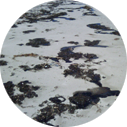 TARBALLS
TARBALLS
We’ve all seen black sticky clumps of oil on the beach. These blobs are usually from natural oil seeps that wash onshore as a result of geological activity and shifts on the seafloor. On average, about 420 gallons of oil from local seeps reach the sea surface daily in Santa Monica Bay. While they are natural, they can be a pain when stepped on. The best way to remove beach tar from the bottoms of your feet is to rub a little olive oil on them – skip the toxic gasoline or other solvents.
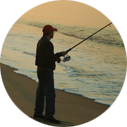 EATING LOCAL FISH
EATING LOCAL FISH
Several areas off our coastline continue to be plagued by high levels of DDT and PCBs. These chemicals, a result of industrial dumping in the post-war years, have unfortunately made their way into the local food chain. So experts say that certain local fish shouldn’t be eaten at all, such as white croaker, barred sand bass, black croaker, topsmelt and barracuda. To be safe, it’s advisable to only eat the skinless filet of other species caught locally just once a week.
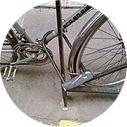 PETTY CRIME
PETTY CRIME
Thieves often prey on unsuspecting beachgoers who leave valuables unattended. Lifeguards suggest leaving belongings close to the tower. As a precaution, bring as few items as possible onto the sand. Conceal personal electronics and car keys in a sports bottle or old sock. Be particularly cautious about leaving valuables on remote stretches of PCH up north, where thieves (targeting cars or abandoned beach belongings) can operate with little scrutiny. And never leave a bike unlocked on a path or boardwalk – not even for a minute!



